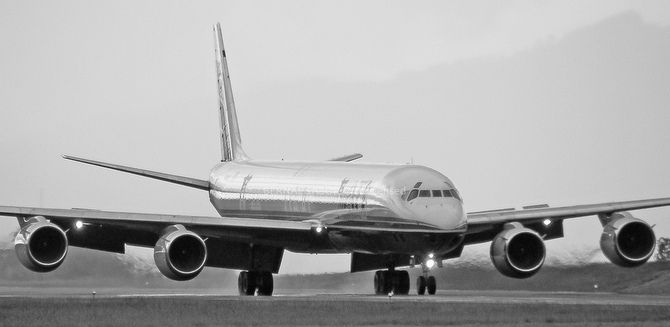Josh Francis explores what 'food miles' really means, and how we should be tackling the environmental problems facing our food chain...
Having occupied the public consciousness for decades, the concept of ‘food miles’ has long been linked with the climatic consequences of importing provisions from far-flung lands. But does quantifying food journeys help us understand our carbon footprint, or does it dramatically oversimplify reality?
The lineage of food miles harks back to research in the 1960s; as a contemporary buzz-phrase, however, it rose to prominence with the publication of a prophetically-titled, 1994 study, The Dangers of Long-Distance Food Transport. Professor Tim Lang, the report’s author, essentially argued that the further an item’s journey, the higher the carbon dioxide (CO2) emissions associated with that product. Which, on the face of it, seems entirely reasonable.
Transportation, after all, accounted for around 14 per cent of global CO2 emissions in 2010, and nowadays it’s often claimed an ‘average’ food product travels 1500 miles before reaching the consumer. Thus, food miles have supposedly become a central rationale for the local-eating movement, and the rise of so-called ‘locavores’. Avoid avocados flown from Mexico, munch on British broccoli instead, and help save Mother Earth – or so the basic premise goes.
However, in recent years, the utility of food miles has been increasingly critiqued, rendering our modern food economy considerably more perplexing. Firstly, there’s the issue of how journeys are calculated. The widely – and generally inaccurately – touted figure of 1500 miles for an average item was first reported in 2001, and since then has been repeated across the local-eating literature. However, aside from data on commercial flows often being inaccessible, arriving at an estimate is somewhat complicated. How are delays and traffic volumes accounted for, and what about the amplifying effects of consumers’ shopping trips?
Explicating an average food item is knottier still: how is a unit of bread, for instance, defined – a loaf, a roll? While a reasonable travel estimate can be made for apples from New Zealand, doing the same for processed goods such as ready meals, with their constituent mishmash of ingredients, is exceptionally tricky – and tenably not very helpful, either.
Indeed, honing in on food miles in the first place only blurs the broader carbon picture. A 2008 study in the US revealed that 83 per cent of food-based emissions originate in the production phase, while 11 per cent are attributable to transport; even then, CO2 emitted getting from producer to retailer represents just 4 per cent. Not insignificant proportions, but certainly only a slice of the pollutant pie.
The proverbial thorn in the side here, then, is that mileage doesn't represent where our food is grown or manufactured, and how it is processed, stored and transported. Take UK-grown green beans. Yes, they don’t journey as far as those from Kenya. But the ability to grow them here relies on fossil-fuel farm machinery and manufactured fertilisers, potentially representing a higher environmental impact than the flown-in kind, farmed using less energy. Further, a study in 1998 demonstrated that Swedish tomatoes had a greater carbon footprint than those imported from Spain, due to the energy required to operate greenhouses in Scandi climes.
Isolating distance also ignores the fact that different modes of transport have radically different footprints, with air freight being considerably more carbon-intensive and inefficient than shipping. Depending on the country and the product in question, however, air travel may still be more eco than trying to grow something locally using energy-hungry methods.
The argument extends beyond the environment, with some suggesting that boycotting items – like chocolate or coffee – from countries in Africa deteriorates socio-economic conditions in communities whom rely on exports to Europe. Others have even taken a (slightly absurd) neoliberalist stance, claiming that being food-mile conscious, and procuring locally, equates to being anti-free trade.
However, to muddy the waters even more, significant critiques, of the critiques, exist. Whilst food miles are simplistic, some opposing research has also been employed superficially to suggest that local eating is environmentally detrimental. Meanwhile, anti-free trade arguments simply neglect the reality that food production, locally and globally, doesn’t exist in an unregulated vacuum.
Furthermore, food mile deriders have tended to lazily conflate it with local-eating, when in fact proponents of the latter can be influenced more by different personal, social and ecological factors, not simply how far food has been trucked. Those who can afford to buy locally may do so because of better-tasting, fresher produce; some may also be motivated by supporting local businesses – the list goes on.
So, should we pay attention to food mile concerns? Yes. Is eating local produce a good thing? Yes. But, be warned, the two are not intrinsically transposable. As with many buzz-phrases, ‘food miles’ does little to illuminate reality: truly understanding the impacts of what we eat and where it comes from involves examining the entire chain, not simply the route from pasture to plate.
Featured image credit: flickr / Bernal Saborio









